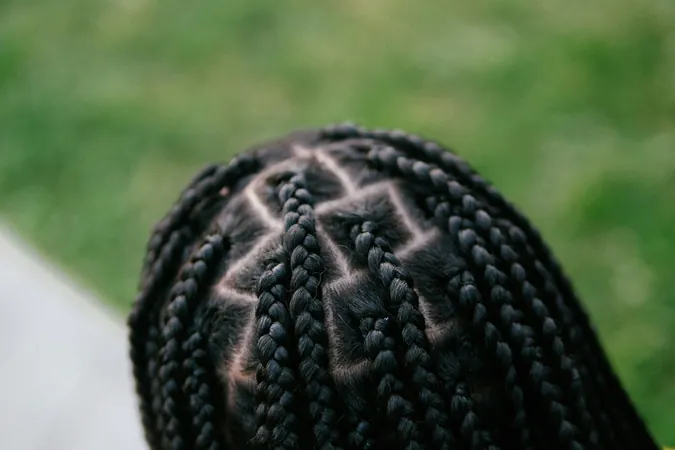
The Surprising Link Between Hair Satisfaction and Mental Health in Black Girls
2025-01-20
Author: Yu
Introduction
A groundbreaking study reveals that hair satisfaction plays a crucial role in the mental health of Black adolescent girls, shedding light on a topic often overlooked in broader body image discussions.
Research Findings
Researchers from UConn gathered data from 193 girls of diverse ethnic backgrounds—Black, white, and Latina—entering grades 9 through 11. The research, published in the journal Body Image, indicates that how these girls perceive their hair is significantly linked to their emotional well-being and feelings of depression.
Motivation of the Study
Adenique Lisse, a Ph.D. student in clinical psychology and a member of UConn's Milan Intergenerational Risk Lab, spearheaded the study. She discovered that Black girls reported feelings of dissatisfaction with their hair more frequently than their white and Latina peers. This dissatisfaction was directly tied to an increased risk of depressive symptoms—a revelation that underscores how racial dynamics shape personal experiences of beauty and acceptance.
Cultural Context
Lisse's motivation for the study stemmed from both her academic interests and her lived experiences within the Black community. 'Growing up, I noticed how prevalent conversations about hair were,' she shares. Recent movements advocating for hair acceptance have been instrumental in changing narratives around Black hair textures, often showcasing the beauty and versatility of natural hairstyles. Yet, the scars of microaggressions and hair-related discrimination linger, affecting self-esteem and mental health.
Cultural Gap in Understanding Body Image
The research points to a cultural gap in understanding body image among Black adolescents. 'Most existing studies lean towards the thin ideal and predominantly focus on white samples,' Lisse explains, highlighting the urgency for more inclusive research. She emphasizes the role of representation in helping young Black girls embrace their natural hair, which differs drastically from dominant beauty standards that favor looser textures.
Suggestions for Interventions
To address these disparities, Lisse suggests culturally relevant interventions, such as programs that encourage positive messaging about natural hair and educate young girls on hair care. Initiatives like 'Attachment tHAIRapy,' which melds therapeutic sessions with hair care practices, could be significant in promoting self-worth and mitigating depressive symptoms.
Community Involvement
Additionally, Lisse stresses the importance of community involvement, urging parents and educators to foster supportive environments where discussions about hair and self-image can flourish. By increasing awareness and creating dialogue, we can confront the societal pressures that impact young girls' mental health.
Conclusion
The findings of this study contribute to a larger conversation about cultural factors in health and well-being, highlighting the necessity for researchers to integrate these elements into future studies. As Lisse rightly points out, 'Hair is a significant aspect of body image that warrants further investigation.'
With plans to explore tailored interventions for different marginalized groups, Lisse is on a mission to ensure that all adolescents feel valued and accepted, regardless of their hair texture. Understanding the intricacies of cultural identity and self-image will be key in shaping future mental health strategies and interventions.
As society shifts towards a more inclusive definition of beauty, research like this provides vital insights into the complexities of identity formation among young girls, paving the way for a healthier, more empowered generation. The conversation is just beginning—will you join it?

 Brasil (PT)
Brasil (PT)
 Canada (EN)
Canada (EN)
 Chile (ES)
Chile (ES)
 Česko (CS)
Česko (CS)
 대한민국 (KO)
대한민국 (KO)
 España (ES)
España (ES)
 France (FR)
France (FR)
 Hong Kong (EN)
Hong Kong (EN)
 Italia (IT)
Italia (IT)
 日本 (JA)
日本 (JA)
 Magyarország (HU)
Magyarország (HU)
 Norge (NO)
Norge (NO)
 Polska (PL)
Polska (PL)
 Schweiz (DE)
Schweiz (DE)
 Singapore (EN)
Singapore (EN)
 Sverige (SV)
Sverige (SV)
 Suomi (FI)
Suomi (FI)
 Türkiye (TR)
Türkiye (TR)
 الإمارات العربية المتحدة (AR)
الإمارات العربية المتحدة (AR)